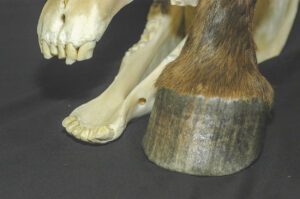An Epidemiological Approach to Studying Laminitis
- Topics: Article, Laminitis (Founder), Vet and Professional
One reason laminitis is so challenging to study is that it can result from many different primary diseases—from metabolic disorders to black walnut exposure. Researchers might be able to make headway, however, if they take an epidemiological approach to studying the disease. Epidemiologist Noah Cohen, VMD, MPH, PhD, Dipl. ACVIM, a professor in Texas A&M University's Department of Large Animal Clinical Sciences, shared how this approach might improve our understanding of laminitis at the International Equine Conference on Laminitis and Diseases of the Foot, held Nov. 1-3 in West Palm Beach, Fla.
Most laminitis researchers base their work on experimentally induced disease models (e.g., by exposing a horse to black walnut extract), which Cohen said does not accurately reflect spontaneous disease and its diverse causes. Epidemiology, on the other hand, entails studying naturally occurring disease (e.g., in a retrospective or clinical case study), with natural (“real world”) exposures that lead to disease.
"Epidemiological studies have much to offer for improving our understanding of laminitis, including identifying predisposing factors," he said. These studies are not, however, without flaw, so Cohen described both advantages and limitations to this approach
Create a free account with TheHorse.com to view this content.
TheHorse.com is home to thousands of free articles about horse health care. In order to access some of our exclusive free content, you must be signed into TheHorse.com.
Start your free account today!
Already have an account?
and continue reading.

Related Articles
Stay on top of the most recent Horse Health news with

















